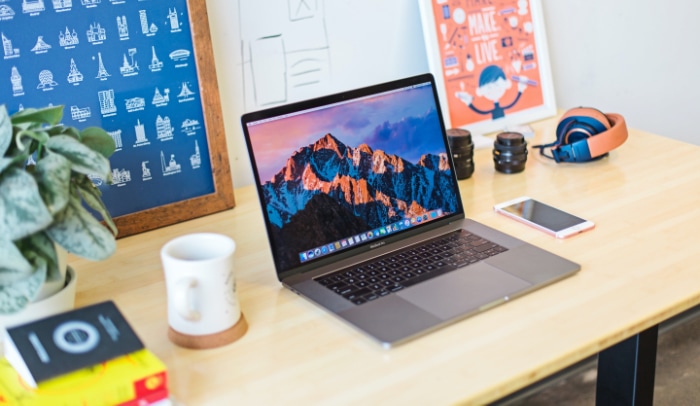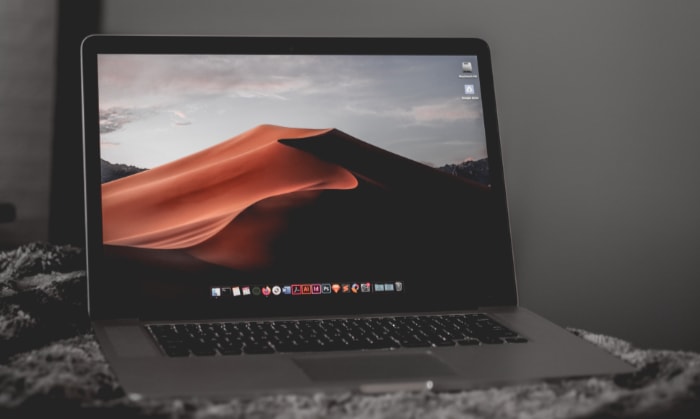Is a Screen Protector Necessary for Your MacBook?

As technology continues to shape our lives in unprecedented ways, one common accessory that often sparks debate among tech-savvy individuals is the screen protector. A widely adopted safeguard for our smartphones and tablets, the question of whether to use one on our laptops, more specifically, on a MacBook, has elicited a myriad of opinions.
Screen protectors, hailed for their capacity to shield devices from the harsh realities of everyday use, seem like an automatic addition to our handheld gadgets. However, when it comes to larger, non-touchscreen devices like the MacBook, their necessity becomes a contentious subject.
In the pursuit of maintaining their MacBooks in mint condition, many users might consider adding an extra layer of protection to their screens. Yet, is a screen protector truly necessary? Or could it, perhaps, hinder the experience and performance that Apple's high-quality devices promise to deliver?
Understanding Screen Protectors
Screen protectors are thin, clear films applied directly to the screens of digital devices to protect them from scratches, smudges, and minor impacts.
Initially, they were conceived to protect delicate touchscreen interfaces from the wear and tear of regular use. In essence, they serve as a barrier between the world and your device's screen, warding off potential damage.
Different Types of Screen Protectors Available in the Market
Screen protectors come in several different types, each boasting their unique features and benefits. The most common types include:
PET (Polyethylene Terephthalate) Film: This is a type of plastic that offers basic protection from scratches and scuffs, providing a moderate level of impact protection.
TPU (Thermoplastic Polyurethane): TPU screen protectors are more flexible and offer more impact protection than PET films, but they are generally more challenging to apply due to their flexibility.
Tempered Glass: These are the most robust type of screen protectors, offering a high level of protection against scratches and impacts. They provide the most similar feel to the actual device's screen but can be bulkier than the other types.
The Widespread Use of Screen Protectors on Smartphones and Tablets
In the realm of smartphones and tablets, the use of screen protectors has become almost second nature. Given that these devices often have touchscreen interfaces that are constantly subject to touch, swipe, and potential drop incidents, a screen protector serves as an inexpensive insurance policy against damage.
This widespread use of screen protectors for smaller devices has naturally led to the question of their applicability to laptop screens, such as those of MacBooks.
Why Some Believe Screen Protectors Are Necessary for MacBooks
A significant segment of MacBook users firmly believe in the necessity of screen protectors. This belief stems from various reasons that we'll discuss in this section, shedding light on why some consider these protectors indispensable.
Preventing Scratches on the Screen
One of the primary reasons cited by those in favor of MacBook screen protectors is the prevention of scratches. MacBooks, like any other laptops, are subject to everyday wear and tear. Screen protectors, as the argument goes, could shield the screen from accidental scrapes and scratches that could degrade the visual experience.
Preventing Smudges and Fingerprints
Fingerprints and smudges can be an unsightly nuisance on your MacBook's screen, particularly if you tend to touch your screen often. Some proponents argue that a screen protector can act as a deterrent to these, making the screen easier to clean and maintain.
Mitigating Glare from External Light Sources
Certain types of screen protectors, particularly those with a matte finish, claim to reduce glare from external light sources. This can be a significant advantage for those who often work outdoors or in brightly lit environments where screen visibility can be compromised.
Enhancing Privacy in Public Places
There are specialized screen protectors known as privacy filters that restrict the viewing angle of your screen. When applied, only the person sitting directly in front of the MacBook can see the screen, while onlookers from the side see a dark, obscured screen.
Those who often use their MacBooks in public spaces, like cafes or libraries, may find such protectors appealing for their ability to keep their work private.
Debunking Myths About MacBook Screen Protectors
A series of misconceptions surround the use of MacBook screen protectors. It's essential to debunk these myths to comprehend the actual need for screen protectors and make an informed decision based on facts, rather than misconceptions.
Touchscreens vs. Non-touch Screens: Understanding the Difference
One of the most common misconceptions lies in the comparison between touchscreens and non-touch screens.
While screen protectors are almost essential for touchscreens, which are subjected to constant contact and potential scratching, the MacBook's non-touch screen is less likely to suffer similar damage, unless mishandled. Hence, the comparison is not a like-for-like, given their different levels of exposure to potential harm.
Demystifying the Durability of MacBook Screens
Another myth that needs debunking is the supposed fragility of MacBook screens. Apple's MacBook screens are made from high-quality, durable materials that are designed to resist normal daily wear and tear.
While not completely immune to scratches or damage, these screens are more robust than many might think, reducing the necessity for an additional protective layer.
The Reality of Anti-Reflective Coatings on MacBook Screens
Many people believe that a screen protector with anti-glare properties is a must-have for their MacBook. However, they may not be aware that Apple has already included an anti-reflective coating on MacBook screens.
Applying a screen protector might interfere with this built-in feature, potentially degrading the viewing experience instead of improving it.
The Privacy Paradox: Screen Filters vs. Software Solutions
While privacy filters do offer an added layer of screen security in public places, they're not without their downsides. These filters often reduce screen clarity and alter color accuracy. Plus, they only provide limited privacy.
For more sensitive tasks, relying on software-based privacy measures and practicing good data security hygiene can offer more comprehensive protection.
Drawbacks of Using a Screen Protector on Your MacBook

While screen protectors seem to promise an extra layer of protection, they also come with potential drawbacks.
Potential Degradation of Screen Quality and Touch Responsiveness
A critical drawback of using a screen protector on your MacBook is the potential degradation of screen quality. Screen protectors, especially the non-premium ones, may reduce the sharpness and brightness of the display.
In the case of MacBooks with Touch Bar, a protector may also hinder the touch responsiveness.
Installation Issues Leading to Bubbles or Dust Trapped Under the Protector
Installing a screen protector perfectly on a large MacBook screen can be a challenging task. Despite the manufacturers' claims of easy application, bubbles often get trapped under the protector, or dust particles sneak in during installation.
These are not only unsightly but can also interfere with the user's viewing experience.
Possible Damage to the MacBook’s In-Built Anti-Reflective Coating
Most MacBooks come with an in-built anti-reflective coating on the screen. There's a risk that the adhesive used in some screen protectors may damage this coating when the protector is eventually removed.
This would result in a permanently blotchy or patchy screen, which is far worse than the minor scratches a protector is designed to prevent.
Detraction from the Aesthetic Design of the MacBook
Apple's MacBooks are renowned for their sleek, high-end aesthetic design. A screen protector, especially one that is not perfectly applied, may detract from the clean lines and seamless appearance that MacBooks are known for.
This might seem like a minor point, but for many MacBook users, the look and feel of their device is an integral part of their user experience.
Best Practices for Protecting Your MacBook Screen Without a Protector
If you decide against using a screen protector, there are still several ways to keep your MacBook's screen safe and pristine.
Keeping the MacBook Clean and Free from Dust
One of the simplest ways to keep your MacBook screen in good condition is by ensuring it is clean and free from dust. Regularly use a microfiber cloth to gently wipe the screen. Remember that dust particles can act as abrasive material, and removing them promptly can prevent potential scratches.
Handling the MacBook with Clean Hands
Ensure your hands are clean before using your MacBook. Greasy or dirty fingers can smudge the screen and potentially transfer grime that might scratch the surface. This practice not only maintains the cleanliness of the screen but also prolongs the overall lifespan of the device.
Using the Right Products for Cleaning the Screen
If your MacBook's screen requires more than a dust-off, make sure to use products designed specifically for laptop screens. Avoid harsh cleaning agents as they could damage the screen's anti-reflective coating.
Apple recommends using a damp, lint-free cloth for cleaning the screen if necessary.
Storing and Transporting the MacBook Securely
Investing in a sturdy laptop case or sleeve can prevent a host of potential screen damages. When transporting your MacBook, ensure it's adequately protected from impact and isn't in a position where items can press against the screen.
Never place anything on the MacBook when it is closed, as this can lead to unwanted pressure on the screen.
Remember, careful handling is the key to preserving the pristine condition of your MacBook's screen. By following these best practices, you can protect your MacBook's screen and maintain its outstanding display quality without needing to resort to a screen protector.
Conclusion
Navigating the debate about whether or not to use a screen protector on your MacBook can be challenging. On one hand, protectors seem to promise an added layer of defense against scratches and smudges, and on the other, they risk undermining the MacBook's superior display quality and sleek design.
However, after dissecting the various arguments and debunking common myths surrounding this subject, it becomes clear that screen protectors may not be as necessary for MacBooks as they are for touchscreen devices.
Indeed, it's important to consider the inherent durability of MacBook screens, the potential for protectors to degrade the viewing experience, and the possible damage to the in-built anti-reflective coating. Additionally, the aesthetic appeal of a pristine MacBook screen, unencumbered by an imperfectly applied protector, cannot be overstated.
While everyone must weigh these considerations according to their individual needs and habits, proper care and handling of the MacBook is undoubtedly the best approach to maintaining the pristine condition of its screen.
By following the recommended practices—keeping the MacBook clean, handling it with clean hands, using appropriate cleaning products, and storing it securely—you can enjoy the MacBook's high-quality display to its fullest without the need for a screen protector.
Ultimately, it is your MacBook, and the choice is yours.


